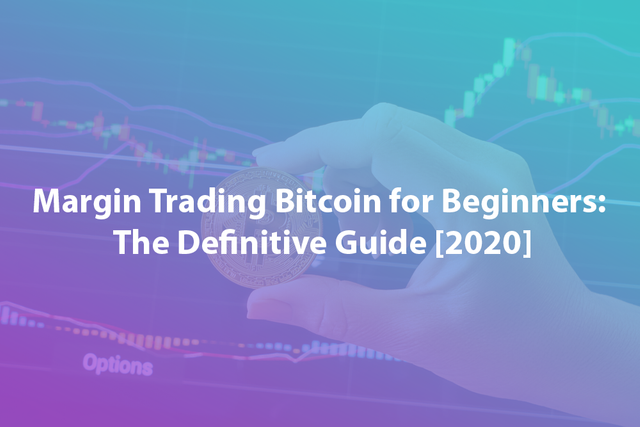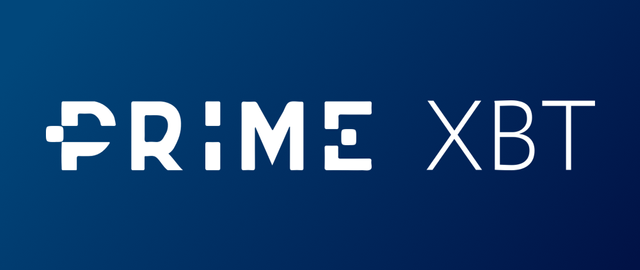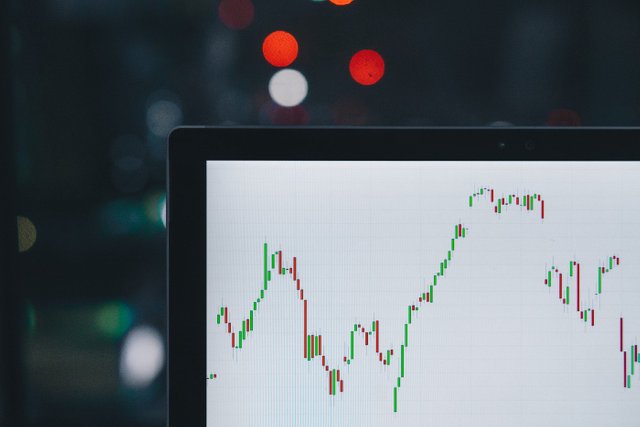Margin Trading Bitcoin for Beginners: The Definitive Guide [2020]

Easily one of the most misunderstood aspects of cryptocurrency trading for beginners, margin trading is a tool that is important for all traders to understand in order to know whether it should be implemented, and the way to do so.
The use of leverage and shorting has the potential to dramatically increase profitability of a wide range of different strategies and to unlock many different opportunities that are typically unavailable without it.
However, without a deeper understanding of exactly what margin trading is and how to use it, many traders mistakenly associate margin trading with risk, while in fact it’s an essential tool for professional traders and institutional investors alike.
This guide is taking a deeper look at what cryptocurrency margin trading actually is, starting by looking at the different types of cryptocurrencies that are available to trade, before moving on to how to implement margin trading, the best places online to margin trade cryptocurrencies, and the ways of mitigating the risk involved in margin trading.
What is Bitcoin?

Bitcoin Basics
Bitcoin is the world's leading and first cryptocurrency, meaning that it is a fully-digital version of money which can be used to perform similar functions such as storing value, transferring value, and paying for goods and services.
Every day there are millions of people around the world that trade Bitcoin and other cryptocurrencies, and are using them as an alternative to the mainstream financial system, composed of banks and payment processors such as PayPal.
The value of a single Bitcoin has increased dramatically since it was first created in 2008, with an approximate return on investment from buying Bitcoin within the first few months of his life and selling it today being over 27,000,000% profit.
It’s because of the huge profits that has been possible by trading Bitcoin over the years, as well as many unique benefits of owning and using Bitcoin, that the number of Bitcoin users has also grown rapidly in the last decade to a point today where there are tens of millions of people around the world using Bitcoin.
In order to use the world’s #1 cryptocurrency, all that is needed is to set up a wallet, which is a piece of software that allows anybody to store and transfer amounts of Bitcoin, and while originally this was a complicated process that required computer programming skills, today it is very easy to set up and run.
How Do People Use Bitcoin?
There are a wide range of uses of Bitcoin that includes creating revenue streams, acting as your own personal bank, making international payments with low costs and low time frames for transfers, and for long-term investing as an alternative to traditional assets.
While generally the ways that people use Bitcoin fall into these use cases, by drilling down into any one of them we can see that there are actually dozens of different smaller use cases within them.
For example, when we look at the ways that people are generating revenue streams, this is broken down into Bitcoin trading, investing, mining, referral programs, selling goods and services for Bitcoin, and many other varied ways that people can support themselves using cryptocurrency.
Some of the more fundamental reasons that people use cryptocurrencies however are for the inherent traits that differ from other financial methods such as the use of banks and using payment processes.
While making an international transfer using a bank it can sometimes take days while making a transfer to anyone on earth using cryptocurrency can take as little as 15 seconds, and while the cost of making transfers with PayPal and other processors can be significant, the cost of transferring huge amounts of cryptocurrency is a tiny fraction of the cost of using contemporary methods.
How Does Bitcoin Work?
Bitcoin works with the use of a technology that was also created in 2008, known as “blockchain”, which is a way that parties that don’t know each other and that don’t trust each other can maintain a balanced financial network in a decentralized manner.
If someone has 10 Bitcoins in their wallet all parties need to know that those Bitcoin were legitimately purchased or earned, and not that the person just created them out of thin air.
Also if you sell a product or service and are paid in Bitcoin, it is important to know that the person that is paying you can’t then reuse the same Bitcoin somewhere else, diluting the value of the Bitcoin you’ve been paid.
These problems and many others are elegantly solved with use of blockchain, which was a revolutionary creation from the inventor of Bitcoin, Satoshi Nakamoto, and that has single-handedly spawned an entire financial industry that has grown at a rate that outpaced all other financial classes in the last 10 years.
What is Margin Trading?

What is Margin Trading?
Margin trading is a set of tools that are used, not only by cryptocurrency traders but by a wide range of different traders in all financial sectors, and that increases opportunities that are available to traders for generating profit.
The underlying process of margin trading is for the trader to receive a loan from a broker, and for that loan to allow the trader to create trades that would typically not be available to them but that have the potential to yield significant amounts of profit.
Margin trading in the cryptocurrency market has grown in prevalence over the last few years as more trading platforms have incorporated it into their services in a response to the demand from traders to be able to explore new ways of increasing their profitability.
Margin trading is an umbrella-term for two distinct-yet-similar tools that can be used by traders to increase their profit, with those tools being leveraging and shorting.
What is Leverage?
“Leveraging” is the process of a trader borrowing funds from a broker in order to create trades that are significantly larger than would typically be available with the capital that they have on-hand.
As a part of the process, the trader will provide an amount of their capital, known as the “margin”, in order to secure the leverage trade, with this margin being used in the case that the trade loses money for the trader instead of generating it.
Because of the mechanics of leveraging, the profit that is generated from the trade can be substantially higher than would occur with a normal trade, being that profit is yielded in multiples of what would typically be gained.
As a concrete example of this, if I believe the price of Bitcoin will increase and put a leveraged long trade on Bitcoin at 10X, for every dollar that I would’ve usually generated from the trade under normal circumstances, I will not generate $10 if the price of Bitcoin does infact increase.
What is Shorting?
Similarly to leveraging, the underlying way that shorting is possible is that a trader will borrow funds from a broker, however the goal of creating short trades is to profit from a drop in the value of an asset, instead of from the asset increasing.
This is achieved by a trader borrowing an amount of an asset that they believe will drop in value from a broker, selling what they have borrowed immediately, waiting for the price of the asset to drop to an acceptable level, and then re-purchasing the same amount of the asset that they borrowed at a cheaper price, repaying the broker, and keeping the difference as profit.
As a concrete example of shorting, I may believe that the price of Ethereum is going to drop sharply and so I borrow an amount of Ethereum from a broker and sell it immediately, the price of Ethereum then drops by 10%, I repurchase the same amount that I borrowed 10% cheaper, I pay the broker, and then keep the 10% difference in cost as profit.
The ability to use shorting in the cryptocurrency market opens up a wide range of opportunities that are typically not available without it, primarily it means for the 50% of the time that the price of an asset is dropping that profit can also be generated.
Why is Margin Trading So Popular?

How Many People are Using Bitcoin Margin Trading?
During the beginnings of the cryptocurrency industry 10 years ago, there were only a small handful of trading platforms that were in existence, and these platforms were very basic in the services that they provided.
Traders were able to buy Bitcoin, watch its price move erratically because of extremely low liquidity present at that point, and then when the price of Bitcoin was higher than they bought it for, they could ideally sell the Bitcoin for profit.
This was all that was available for traders in the cryptocurrency market for many years until eventually trading platforms in very small numbers began integrating margin trading into the services that they provided.
These platforms typically were still very rudimentary and this meant that although the demand for margin trading in the market was growing, that traders were still limited by the options they had available.
However approximately 3 years ago, there was an enormous influx of new traders entering the cryptocurrency market during the 2017 bull run, where the price of Bitcoin reached a new all time high of almost $20,000.
As the size of the market expanded rapidly, so did the number of trading platforms available, and as more new platforms had to compete with each other they began introducing higher quality ways for traders to interact with the cryptocurrency market, including the widespread introduction of margin trading throughout the market.
Is Margin Trading Bitcoin for Profitable?
The easiest way to understand the profitability of using margin trading with Bitcoin and other cryptocurrencies is by looking at the example of institutional investors such as hedge funds and commercial banks.
Although retail traders have only relatively recently begun using margin trading en masse in the cryptocurrency market, it has been an essential tool of institutional investors for many years because of the clear benefits of using margin trading as opposed to trading without it.
Institutional investors have the best resources and minds in order to put towards a single goal, the goal of maximizing the profit that they generate for their investors, and within the scope of this goal multi-million dollar institutional investment funds consistently choose to use margin trading in order to achieve this.
This is because the profit that can be generated with margin trading can be anywhere up to 100 times as much as the profit that is typically available to other traders, and this clearly being optimal for anyone that wants to maximize the efficiency of the capital that they use in the cryptocurrency market.
Do Bitcoin Trading Platforms Provide Margin Trading?
As mentioned earlier, for a number of years there were little or no margin trading opportunities within the cryptocurrency market for traders and investors, however this situation is much different today in 2020.
Today there are a wide range of cryptocurrency trading platforms that provide margin trading, with some platforms starting with it being integrated into the core of their services, but most platforms instead seeing the demand for margin trading and integrating it after the fact.
While there are a large number of trading platforms today that offer margin trading services to the cryptocurrency industry, there is a huge distinction between the best and worst places available.
Often this comes down to the fact that although a lot of platforms provide margin trading, the vast majority of these only provide relatively small leverage of between 2X and 5X maximum, whereas the platforms which are at the top tier of the cryptocurrency industry provide higher leverage of up to 50X or 100X.
Where are the Best Places to Margin Trade Bitcoin?
PrimeXBT

PrimeXBT is the leader in the cryptocurrency margin trading space in 2020, having launched in early 2018 with a bevy of advanced margin trading tools and features and growing rapidly since then.
The platform provides industry-leading leverage on a wide range of cryptocurrencies that include BTC, ETH, XRP, LTC, and EOS with leverage of up to 100X, and up to 500X leverage on a wide range of different traditional assets that include stock indices such as S&P500 and FTSE100, forex pairs such as GBP/USD and AUD/CHF, and commodities such as gold and oil.
PrimeXBT provides a range of advanced order types including stop losses and OCO orders (or “one-cancels-the-other” orders), with this allowing traders to safely design and implement margin trading strategies in the cryptocurrency market.
As well as this, PrimeXBT is known for providing the lowest fees of any major cryptocurrency trading platform with a flat rate of 0.05% being applied to all trades, and this being less than half the cost of trading at PrimeXBT’s nearest competitor.
eToro

eToro was launched in 2006 and has spent most of its time in operation as a platform that provides traditional asset trading, with a wide range of stocks, currencies and commodities being available.
The platform itself is professionally-made and is easy for traders to use, with a number of different margin trading features allowing traders of all experience levels to develop strategies of different levels of complexity.
While eToro is a professional trading platform, some traders may find its fees to be significantly higher than other options, and this is worth considering when comparing it to other margin trading platforms.
However saying this, eToro is a good example of a platform that provides professional margin trading services and access to many of the world's financial markets.
What are the Best Ways to Use Bitcoin Margin Trading?

Leveraging Flat Trends
One of the best and most underrated ways of using margin trading in the cryptocurrency market is by leveraging relatively short moves during flat trends and consolidation.
While for many traders there is only the possibility to generate profit when the price moves a large amount up or down, often during flat periods the opportunity to generate profit is outweighed by the risk of having to predict such sharp, short-term price changes.
However, a problem can arise when a flat trend lasts for a significant period of time and a trader is then out of action during that trend, which means that revenue is unavailable until either an upwards or downwards trend is formed.
One way that margin trading can help to open up significantly more opportunities for generating revenue in the cryptocurrency market is by the use of leverage during flat periods to make even relatively small moves up and down more profitable.
With the use of shorting to allow traders to profitably trade during downward trends and bear markets, and the use of leverage to allow traders to be involved during flat trends profitably, this means that at all times the trader is now able to generate profit in the cryptocurrency market without exclusion.
Shorting Pumps and Overbought Assets
Pumps are short-term rapid increases in the price of a cryptocurrency that occur frequently throughout the market, and present a wide range of different opportunities.
One of the best strategies for using margin trading to create situations where there is an increased probability of generating profit is by shorting pumps, and shorting cryptoassets when they become overbought.
According to the theory of mean reversion, when a crypto asset moves significantly far away from its historic average price, there is an increased likelihood that it will return back towards its average at some point in the future.
From a psychological point of view, when the pump occurs there are a significant number of traders that will be holding the asset and that will make a short-term amount of significant profit
Therefore it is logical that when they have the opportunity to take the profit that they will, and this will generate a chain reaction where the price of the asset drops back towards what was before the pump.
Once a pump has been identified, it is possible to short the cryptoasset at its peak, and then once the price of the asset drops, closing the short position and taking short-term profit by doing so.
Going Long on Bull Runs
Unlike all other financial assets, the cryptocurrency market has an inherent mechanism within the way that bitcoin functions known as the “halving cycle”, which is where every 4 years the amount of Bitcoin released to miners each day is cut in half.
Because of the artificial scarcity that is programmed into how Bitcoin works, and because the rest of the cryptocurrency market follows the price of Bitcoin more or less, this means that every 4 years there is a rapid increase in the value of the cryptocurrency market known as a bull run.
While significant profit can already be generated just by trading a bull run and holding cryptocurrencies throughout the duration, astronomical profits can be generated by also using leverage on long positions during a bull run.
At no point in the cryptocurrency market is there a better opportunity for the generation of high profits then by leveraging a long position just prior to the beginning of a run.
What are the Risks of Margin Trading Bitcoin?

Not Using Stoplosses
Some traders associate risk with margin trading, and particularly with leveraging, and although there can be an increased presence of risk, there are a number of mechanisms available to traders in order to mitigate this risk while leaving the potential to generate higher profits intact.
One of the most widely used and well-known such mechanisms for risk mitigation is the use of stoplosses, which are executed when the price of an asset moves too far in the opposite direction than is intended.
Once the threshold has been reached, the order will automatically execute itself and will close the position, protecting the trader from incurring losses that they are not willing to incur, and effectively ending the trade.
It is highly recommended, if not essential, for traders that use leveraging to also include the stoplosses in order to ensure that if the trade goes in the opposite direction that it is only “stopped-out” at the threshold, and the position is not liquidated, with the trader losing the entire balance that they have.
Inefficient Use of Capital
Traders often spend months or years trading in the cryptocurrency market before building enough knowledge to be able to reliably develop strategies that generate profit regularly.
Once a trader has developed a strategy that will reliably generate profit, any profit that they are generating could be amplified significantly with the use of leveraging, and this is by far the most efficient way to use the capital, as opposed to leaving profit on the table and not using margin trading.
One of the big risks that successful cryptocurrency traders face is the inefficient use of the capital by not using leverage to magnify the profits that they are already generating, but instead settling for significantly lower revenues.
As an example, if a trader has a strategy that is reliably generating 10% profit per month and they have $1000 invested into the strategy, they can generate $100 per month in profit.
If they used that $1000 each month and leveraged it at 50X, they would then be generating $5000 per month in profit from the $1000 of capital.
Using Maximum Leverage for Every Trade
Another risk that traders need to be aware of is using maximum leverage on all trades instead of calculating a balanced way of implementing leveraging depending on the situation.
Professional traders go through a process of assessing the risk factor of the situation prior to designating how much leverage they will use on the trade in order to make sure that they are protected.
If a trade has a higher risk factor, then using less leverage will ensure that there is a wider margin of error that they have available to them, while if the trader has calculated that the risk of a given trade is relatively low, then it makes sense to use higher leverage in order to try to secure a greater amount of profit from the trade.
In this way, leveraging can be seen in a similar way to how hedging can be calculated, in that the amount of the cryptoasset that needs to be held in a hedge should be calculated depending on each individual situation, and this is also true for leverage.
In Conclusion
Margin trading is a powerful tool for beginners to use to be able to open up new opportunities for generation of profit, and to protect their capital in the cryptocurrency market.
While many retail traders miss the opportunity to use margin trading in their day-to-day activities, it is an essential tool that is used by almost all professional traders and institutional investors because of the efficiency of capital usage that it unlocks.
While many traders focus solely on the risk that is involved with margin trading, it is only part of the equation and it is important to take into account the ways that margin trading can reduce risk as well as increasing it, and the various risk mitigation tools that are available to traders.
The platforms we’ve mentioned are two of the most popular and widely used cryptocurrency margin trading platforms on the market, providing professional margin trading tools for retail traders and institutional investors alike, and to find out more about the services that they provide, check out PrimeXBT and eToro.